By Pete Vack
Photos by Hugues Vanhoolandt
Recently we published two articles about Gordini before WWII., Gauld on Gordini and Gordini Before the Big One. This week, Hugues Vanhoolandt gives us a post war Gordini Gallery, consisting of photos taken all over Europe since 2008.
Before VeloceToday contributor Roy Smith wrote his latest book, Gordini, the only source of in depth information about the cars was ChristianHuet’s amazing book, on the subject. Published in 1984 in French, Huet traced the history of Gordini, plus all known cars.
Huet’s task was made a bit easier because there were very few Gordinis ever built; every chassis was a race car so race events and photos provided a field for research. In 1957, when Amedee Gordini retired his cars from racing and went to work with Renault, he wisely sold many of the remaining Gordinis to museums throughout France. The largest recipients of were the Schlumpf brothers, who in 1960 came into the possession of 13 of the 32 post war Gordinis. Other cars were kept by their owners, hidden away until it became affordable to have them restored.
While at the very same time Ferrari blithely went about destroying his old racecars, the Gordini’s enshrined in the museums ensured that his remarkable and beautiful jewels would never die, enhancing his own legacy and history. Since the 1990s, many of the ex-museum cars have come into the hands of those who wish to see them in action once more. Some 56 years after Gordini retired his cars, a few now appear at selected events such as the Monaco Historics and Goodwood. Few, if any, can be seen in the US, although in 2001 one did appear at the Monterey Historics.
Gordini’s cars were a unique combination; French, Italian, exquisite and fast. The rarity and successful race records plus the drivers such as Behra and Fangio, make them as desirable as a mid-fifties classic could possibly be. Information, photos, specs, and tests were sparse and even less well known in the U.S. Fred Wacker was one of the few Americans who actively raced a Gordini, and he did so in Europe. Gordini brought cars to race in the Carrera Panamericana but the cars returned to France. For years, Gordinis remained mysterious and unknown, and since most were in museums, few ventured out to vintage race car events.
As related in our earlier articles, Gordini was supported heavily by the new Simca company prior to the war. This support continued after WWII and the cars were known as Simca Gordinis. Then came the disastrous 1951 Le Mans, when all four 1500cc Gordinis retired. It was too much for Simca’s M. Pigozzi; he pulled his financial support for Gordini and from that point on the cars were known only as Gordinis.
A note about chassis numbers and Types. Postwar, Gordini created an 1100cc formula car much like the Cisitalia D46. These were called T11s. Over the years most T11s were modified and upgraded to T15 which were, for the most part, 1490cc. T15s were often upgraded or changed to sports racers, such as 18s. Each had a unique chassis number, generally in order of initial construction; 02 GCs, 06 GS, 18GC, etc. The letter ‘s’ after the numbers or suffix would mean a sports model. Engines had Types as well, T15 at just under 1500cc being the most common. Almost all chassis had a “immatriculation” number, or license tag. It can get confusing and thankfully in this case there are only 32 chassis to track, and all the work has been done by Huet and recently updated by Roy Smith in his new book on Gordini. (Smith’s book is completely different and takes the Gordini saga right through to the Renault years and beyond.) We’ve asked Roy to check our assumptions below and we thank him for his corrections. However, that does not guarantee that all of the below information is 100 % correct.
Note that Ed McDonough will be featured driving s/n 19GCS coming up in VT, and we’ll take a much closer look at s/n 33 in the near future.
Finally, thanks to our man Hugues Vanhoolandt, we are able to present these Gordinis for this article. I imagine he has been wondering if we’d ever use them!
Gordini Gallery
Chassis number 02GC
Number 15 is a monoposto, original chassis number 02GC, constructed in 1947. It was driven by Gordini himself at the Torino GP in 1946, before he decided to retire from racing. Maurice Trintignant also took part to some races in this particular car. Driven at Monaco in 2008 by Jean-Jacques Bailly (F).
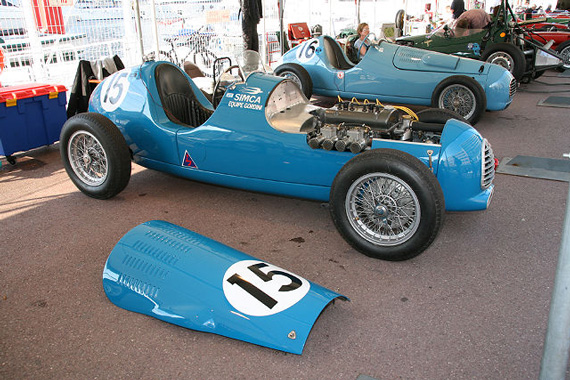
02GC began life as an 1100 cc, but today has a DOHC Gordini head, bigger wheels and tires for the extra power. Almost all Gordinis were upgraded through the years.
Chassis number 06GC
Number 16 below was driven by Eric Leroy (F) at Monaco in 2008. This is a 1947 T15 which was rebodied a as sport in 1953 with a new chassis number, 39. It was at the Schlumpf for years and recently rebodied back to GP form. This one was a winner at the Isle of Man GP with Prince Bira of Siam. Then Maurice Trintignant took it to 4th in the Monaco GP of 1948. Later, as a sports car, it was driven by Gilberte Thirion and the late Annie Bousquet.
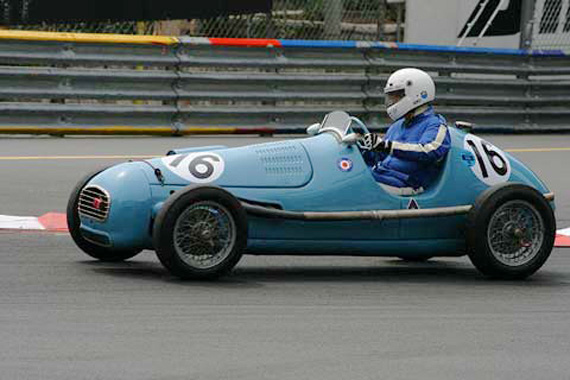
This is the classic 1100cc Gordini that gained many successes and helped build the Gordini name. Note the small grille and diminutive body.
Chassis number 17S
This one may not be correct, so we’ll tell you why we think it is 12GC/17S. Originally it was a T15 monoposto built in 1949 and driven by Trintignant at Lausanne in 1949. In September of 1952 it was transformed into a sports racer, with a chassis number 17S. From Huet’s book, we see that the only Gordini body with the large vent plus unique door design is on 17S. We can’t find any such license number via Huet though, so there is still some doubt.
Chassis number 19GCS
We’ll have an in-depth look at this car later on. It was originally built in 1949 and was shown at the 1949 Paris Salon. It was always a sports car, always 19GCS, first left hand drive, then converted to right hand drive. In the 1970s it was rebodied as a single seater, but later converted back to the original body type as it appears today as owned by Eddie McGuire. Ed McDonough drives it next in an upcoming issue of VeloceToday.
Chassis number 20S
There were two coupes built, this one being the Fangio/Gonzales car that competed at Le Mans in 1950. It was almost a seamless life, and it now owned by Huet and displayed at a number of events such as Goodwood. But while the barchettas were most attractive, the coupe is a bit chunky.
Chassis 36S
Constructed in 1953, this 8-cylinder Gordini was driven by Jean Behra in the 1953 Tour de France, as an enveloped-bodied central-seater. It was modified in 1955 and became famous as the car Francois Sagan drove in 1956 for publicity. It is often referred to as the Type 24S instead of by its chassis number, 36S.
Chassis 31
This is a T16, and perhaps the most famous Gordini of all. Jean Behra won the Grand Prix of Reims in 1952 over serious Ferrari opposition. It was Gordini’s first truly competitive F1 car.
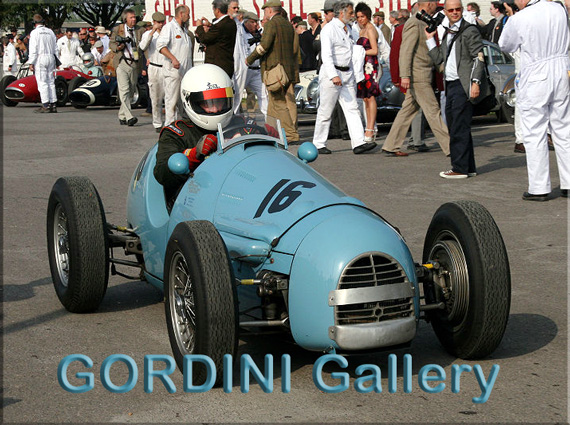
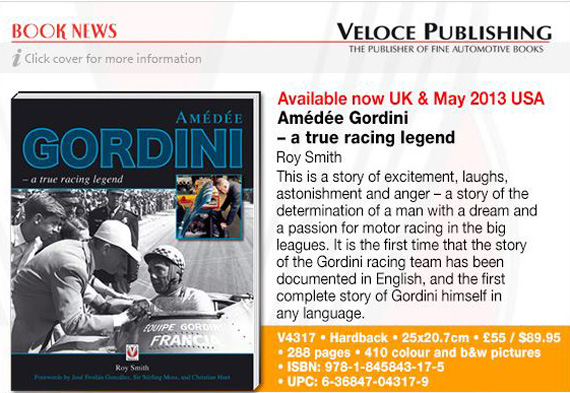
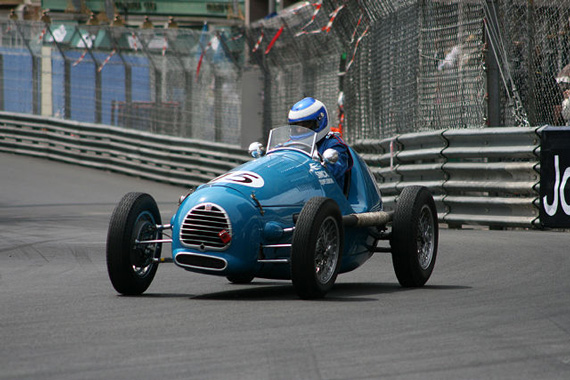
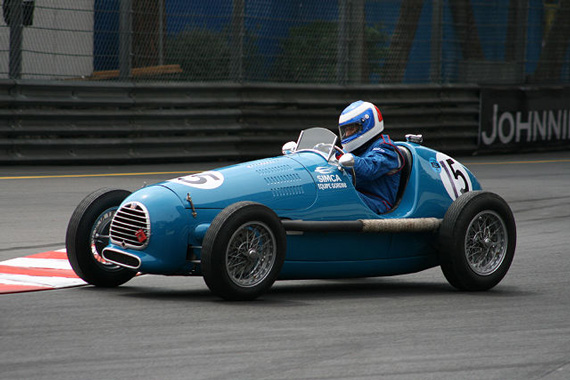
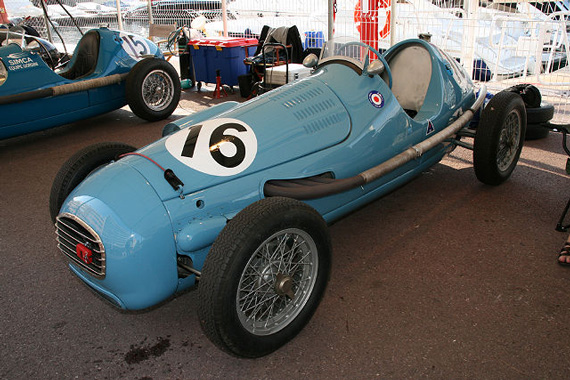

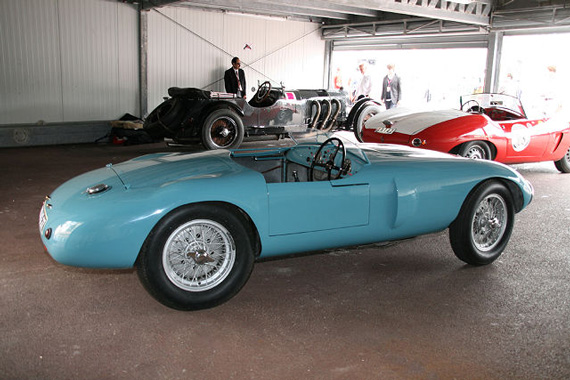
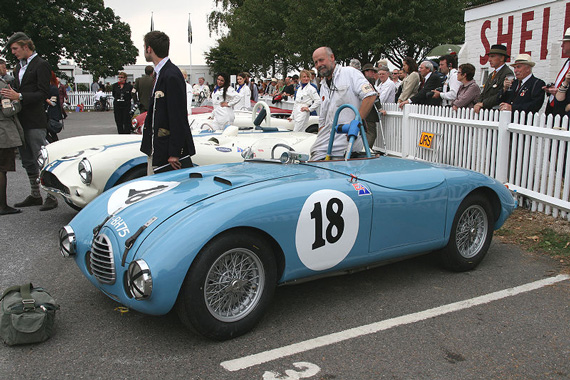
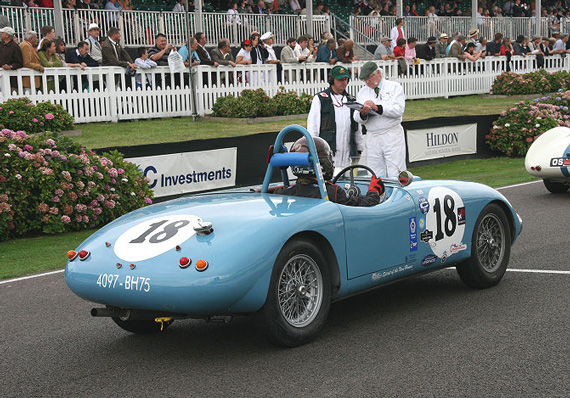
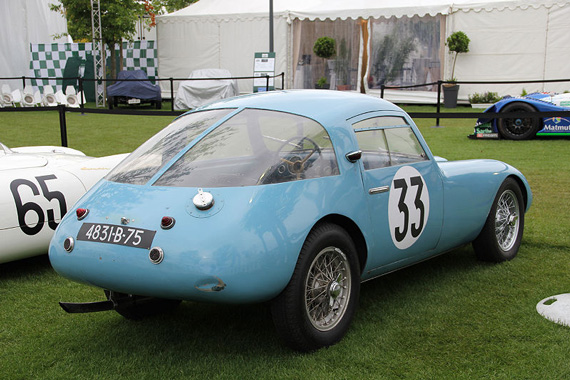
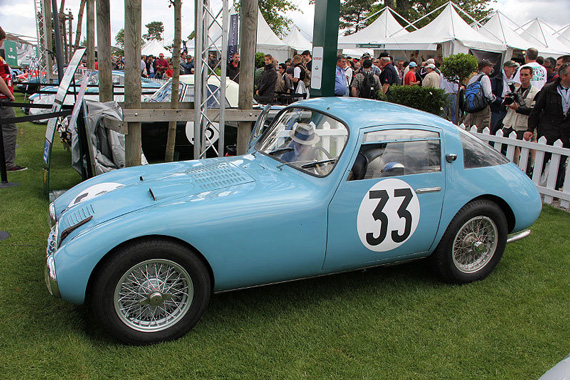
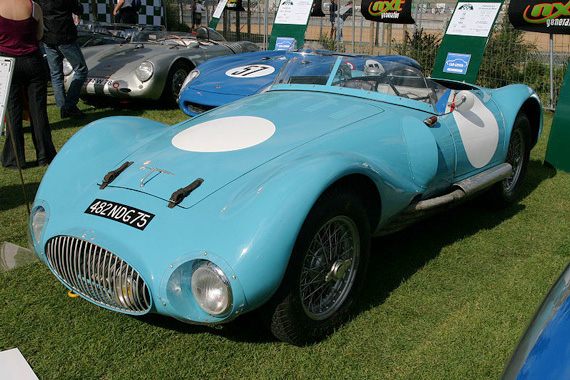
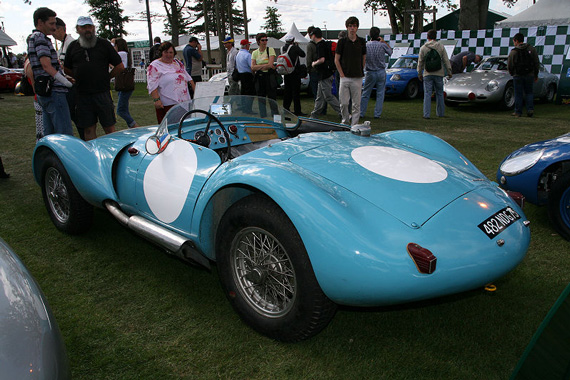
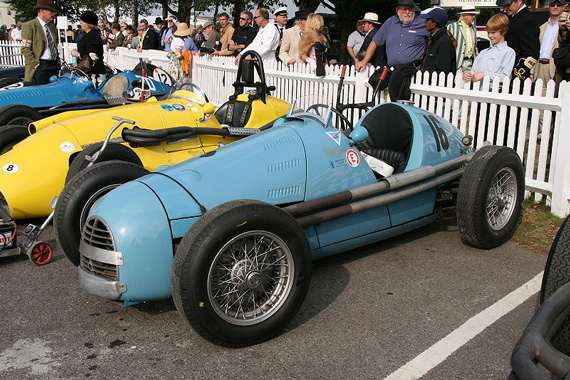
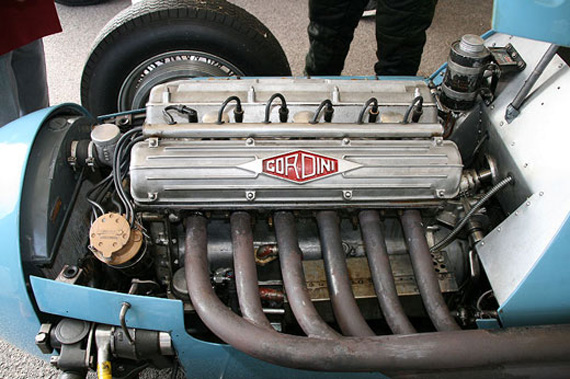
I knew where the Fangio Chassis number 20S was and have extensive pictures of it, including the Boomerang.
This little Aquarium, as it was affectionately known also, is impressive close by. The dimensions while odd actually flow pretty well. Well, at least for me.
I’ll never forget one of the best cars I ever owned; from Summer of 1978 through sometime in 1982 I was the proud pilot of a 1974 Renault R17 Gordini. “Renée” had a hemi 4, 5-speeds, front-drive, a huge sliding fabric sunroof with a fiberglass cover for extra weather protection in the winter. The details that impressed me most were quality touches like chromed door edges and the solid “snick-thunk” when you closed the door, like many Mercedes I was familiar with. I had many fun times with her, during the first few years I lived in the Los Angeles area.
Really handsome coachwork on some of these, especially chassis #17S and without any race number. Dave C
I agree with Nicolas, but with the understanding these were very small cars and to put a roof over the head of a full-sized human was no small feat. All the plexiglass suggests an attempt to make the aerodynamic roof disappear and the roadster line remain mostly intact—visually.
Neat cars.
Also, HI to Larry Crane
I watched a Gordini powered R8 in action at the Thunderbird Winter Rally in 1973, The event started in Vancouver and all the real action was the 2nd night out of Kamloops. We faced 4 inches of freshly fallen snow when starting the evening activities and the organizers had a problem getting the finish time control team into place for the first stage. As the competitors backed up, waiting for the stage to start, the sky’s continued to dump snow. Finally they opened the stage and we were able to watch the first 20 cars start the stage which went up a fairly steep grade to crest a hill and disappear. Conditions were terrible and the first 4 or 5 cars slipped, and over-revved as they fought for grip to propel them up the grade. The next car up was the R8 Gordini. As the final countdown seconds passed, the car revved moderately and then was off. No spin of tires, no sideways action, the car just rocketed up the grade and was gone in a flash, must have cleared the crest of the hill doing at least 20mph faster then any car before it. That car had grip!